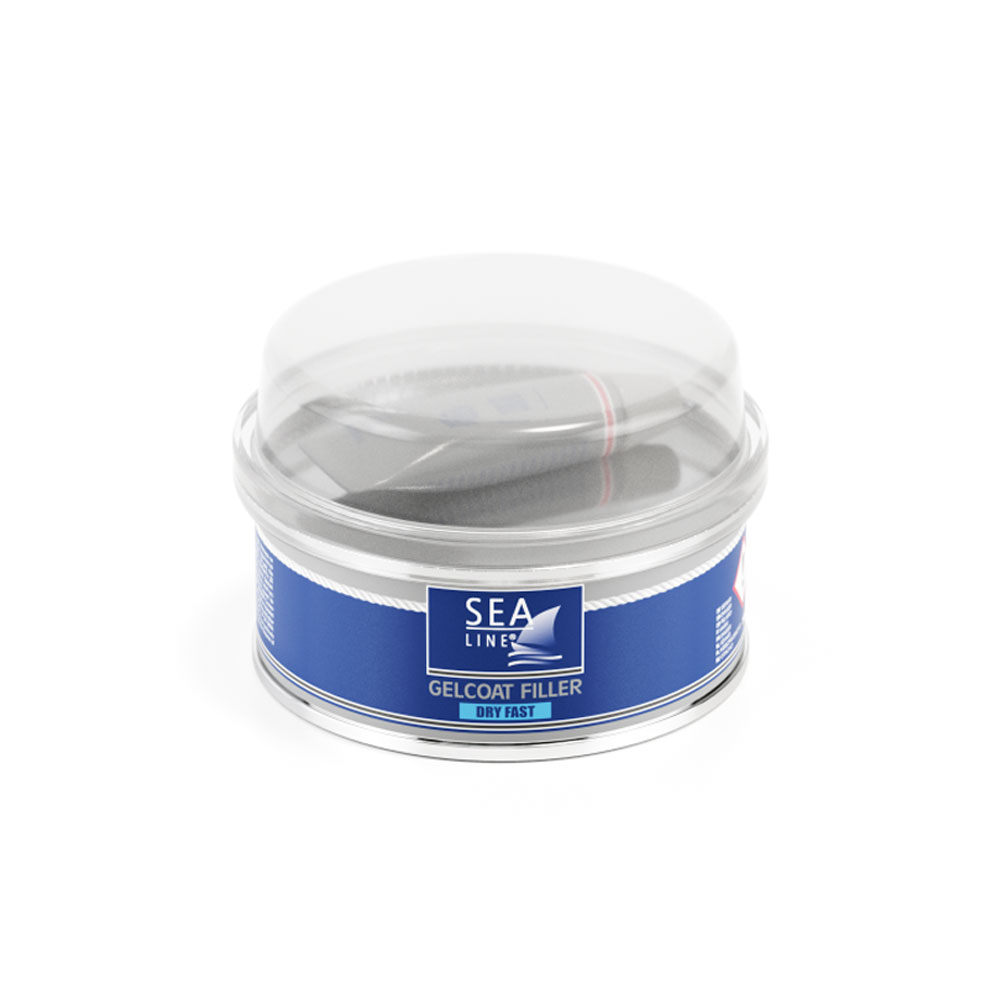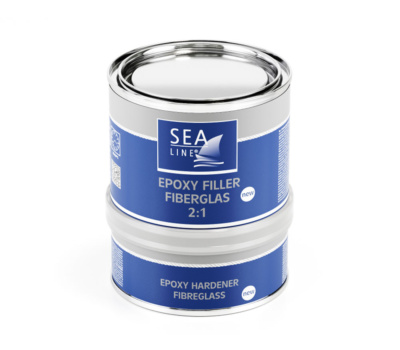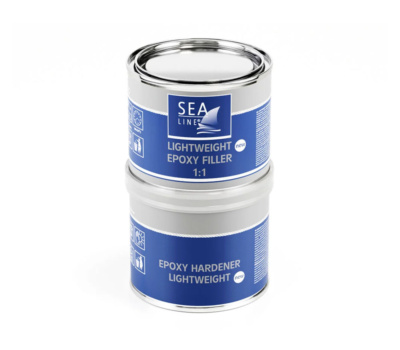Gelcoat Filler is very fast hard and easy in use.
| Weight | Color | Code |
|---|---|---|
| 100 g | Navy | 14312 |
| 100 g | Light Grey 06 | 14313 |
| 100 g | Ivory 04 | 14315 |
| 100 g | Warm white 03 | 14314 |
| 100 g | Cold white 02 | 14311 |
| 100 g | RAL 9010 Pure white 02 | 14316 |
| STYRENE FREE | ||
| 250 g | RAL 9010 | 12021 |
| 250 g | RAL 9001 | 12022 |

Manually:
| Type | GRP Laminates |
| Place | Above waterline |
| Function | Scratches and small repairs |
| Pot life 20°C | 6÷7 min |
| Hardening time 20°C | 4 h |

Epoxy fillers are primarily the only fillers recommended for use on hull components constantly immersed

Epoxy fillers, including fiberglass filler, are primarily the only fillers truly recommended for use both

Recommended for large areas due to low own weight
If the scratches are not deep, then we can renew the scratched side by polishing with Sea-Line polishing pastes. Above the waterline, when the scratches are not deep, the surface can be repaired with a DRY FAST gel coat filler. Deep scratches should be filled with epoxy filler (selected depending on the requirements of the scratched surface), painted with a primer and then painted with topcoat.